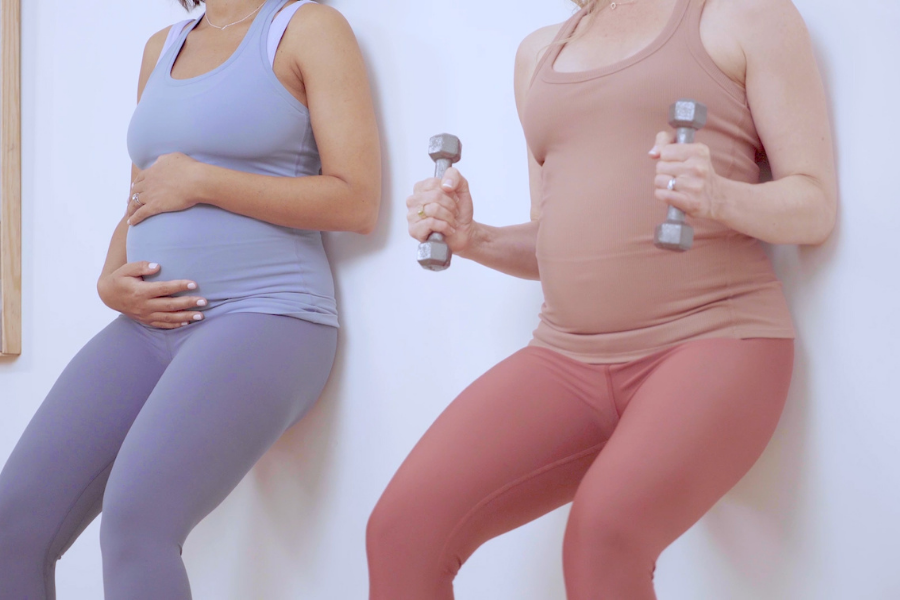Preparing for Pregnancy 101
Everything You Need to Know About How to Prepare for Pregnancy and Prenatal Exercise

The decision to become pregnant is a huge life-changing event, one where suddenly the amounts of information you feel you need—or don’t need—can quickly become overwhelming. While there’s no one place that holds the answer to every single question racing through your mind, Every Mother hopes to be as helpful as possible by providing answers to your questions about preparing for pregnancy here.
How to Prepare Your Body for Pregnancy
We can help nature take its course with simple steps on how to prepare your body for pregnancy. Pre-pregnancy workouts have been clinically proven to increase fertility, especially moderate aerobic exercise (defined as being able to carry on a conversation during the performed activity without losing your breath). Ideally, you want a challenging, high-energy workout without the high impact, which is why Every Mother’s Surpass is one of the best fitness programs to prepare for pregnancy. The EMbody Surpass path includes:
- Detailed coaching in our foundational exercise, Core Compressions
- High-Intensity Interval Training (HIIT)
- Cardio Strength
- Targeted Core Intensive, Upper Body, Lower Body, and Full-Body Workouts
- Core-Safe Yoga
Because Surpass supports long-term core health and overall fitness, it’s one of the best pre-pregnancy workouts for women preparing for pregnancy.

Why is Prenatal Exercise Important?
There are a number of reasons why prenatal exercise is important when preparing for pregnancy. Prenatal exercise supports a healthier, easier pregnancy, helping avoid common discomforts such as lower back pain, urinary incontinence, and constipation. It also builds strength and stamina so there are fewer possible complications during birth. While even the slightest amount of activity—like taking a brisk walk—is beneficial, Every Mother’s Prepare path is a safe, OB-endorsed program with trimester-specific regimens to help you feel your best during pregnancy.

What Are the Best Prenatal Workouts?
Not all prenatal exercise is created equal, and some workout routines may cause more harm than good. When choosing the best prenatal cardio exercise, you want to find something that is safe and gentle but still makes you break a sweat. Every Mother’s OB-endorsed and trimester-specific EMbody Prepare Path offers a variety of safe routines that can be complemented with gentle cardio workouts such as:
- Brisk Walking
- Elliptical
- Swimming
- Indoor Cycling (moderate intensity)
- Low-Impact Dance or Aerobic Classes (without jumping)

As for running during pregnancy, it’s generally discouraged in the second and third trimesters. If you wish to run during your first trimester, take care to listen to your body and don’t overexert yourself. It’s important to protect your back and stabilize your pelvis with proper breathing and core engagement as described here.
In addition to doing low-impact, moderate prenatal cardio exercises, you can also perform Kegel exercises for pregnancy anytime and in the comfort of your home. Many women worry that Kegels may overly tighten the pelvic floor muscles, however, incorporating these into your prenatal fitness routine will actually build a toned pelvic floor, which in turn helps endure the difficulties of labor far better than a weak pelvic floor.
Kegel exercises are so valuable to perform during pregnancy that they are integrated into Every Mother’s Core Compressions, as well, unless you have been advised by a pelvic health physical therapist to avoid Kegels due to an overactive pelvic floor.
Learn more about Kegels from Every Mother Pelvic Wellness Educator and Pelvic Floor Physical Therapist Abby Inman here.

What Are Common Issues That Can Arise with Pregnancy?
Your body is going through great changes during pregnancy. And with those changes come plenty of discomfort and possible complications. One of the major physical issues that can arise with pregnancy is developing diastasis recti, or the separation of the abdominal muscles. Diastasis recti occurs in more than 60% of pregnant women and is the cause behind what is commonly described as the mom “pooch” or a sagging or protruding stomach. It also contributes to pelvic floor issues such as back pain, urinary stress incontinence, constipation, and painful sex.
You can easily check for diastasis recti while you’re pregnant–follow the steps in this video or the self-check described in this article. Diastasis recti is both preventable and resolvable without the need for surgery. Every Mother’s Reclaim path is the only clinically proven postpartum workout program that resolves diastasis recti and offers safe, gentle exercises that promote healing the abdominal separation, no matter how wide the gap.

What Should I Expect Postpartum?
Even if you don’t experience certain complications during pregnancy, you still need to take care of your health in the postpartum period as there are several consequences that can come with childbirth. Pelvic floor dysfunction is a common issue amongst early postpartum women, with symptoms that include pelvic pain, leakage, and pelvic organ prolapse.